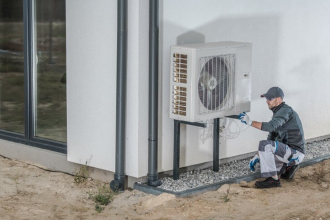From day one since its installation, your roof has been hard at work, day and night, through storms and sun, to protect you, your family, and everything beneath it. But sturdy and reliable as your roof is, it will eventually wear down over time and from continuously battling the elements. As a homeowner, you need to be keen on paying attention to your roof, as small issues can quickly turn into costly problems. While a professional roof inspection is always a wise move, there are several early warning signs that you, as a homeowner, can identify on your own. As the first line of detection, noticing early warning signs early can save you money and stress by allowing you to address issues before they escalate. Below is a list of things to look for.
Shingle Damage
Shingles are reliable indicators of a roof’s health. Chips, curls, cracks, or missing shingles here and there indicate that your roof is ailing, exposing the underlying layers of the roof. This exposure due to shingle damage increases susceptibility to leaks and also leads to debris accumulation, which can complicate drainage. Exposure to severe weather speeds up shingle deterioration and worsens emerging damages, so it’s vital to immediately conduct a roof inspection. The extent of the damage will help you decide if you should call your local roofer or take immediate repair measures. If you live in North Carolina, find a Lake Gaston roofer if the roof of your home near the lake suffered extensive shingle damage. Sharing your visual inspection findings can help professionals confirm shingle issues early, facilitating repair or replacement. Homeowners may find it helpful to look for granule loss in the gutters. Granules protect shingles from UV rays and harsh weather; losing them can lead to premature aging. If you observe an excessive buildup in gutters, it may signal that your roof needs urgent care. Addressing this issue enables you to protect your investment and support the integrity of your home.
Discoloration and Staining on Ceilings or Walls
When your ceiling looks like it’s slowly turning into a map, it indicates water intrusion and moisture buildup, which can come from the roof, pipes, or both. If your pipe is not the culprit, immediately check your roof for leaks and apply timely intervention. These stains can worsen if left unchecked, compromising shingles and underlying materials, reducing the roof’s overall lifespan, and causing structural damage. Your timely action when noticing water spots can lead you to contact a professional to help pinpoint the source of the leak to prevent further issues.
Flashing Issues
The flashing is often paid little attention until the warning signs appear on or near where they are located, like wall stains, chimney moisture, or skylight leaks. The role of flashing is vital — it keeps water and moisture away from areas where the roof touches, like walls, chimneys, valleys, etc. If flashing is damaged or improperly installed, it can create vulnerabilities for leaks. Look for rust or gaps in the flashing that could let water infiltrate, as damaged flashing can cause extensive damage down the line, making it vital to monitor these parts. Routine checks and maintenance of flashing can extend your roof’s lifespan and reduce the need for costly repairs. Any visual sign of wear should prompt an immediate inspection by a qualified contractor to ensure everything is intact.
Sagging Roof Lines
Sometimes, it’s not the roof that takes a hit as time goes by but the structure beneath it — the roofline. A sagging roofline is a serious red flag that indicates structural issues, most likely due to inadequate support structures or damage from moisture or rot. If you notice any areas where the roof appears to sag, promptly contacting a qualified professional is imperative. Ignoring this sign can lead to significant safety hazards. Engaging a professional can provide clarity regarding the underlying issues leading to sagging, which may stem from termites or water damage. Early detection and remediation can save homeowners from severe architectural and financial setbacks.
Increased Energy Bills
When energy bills shoot through the roof, it’s an indication that there’s a problem with the structure itself. An aging or damaged roof can lead to poor insulation, forcing heating or cooling systems to work harder. If energy bills rise without an obvious cause, the roof should be the first place to inspect, as it is responsible for most of a house’s solar reflectance and absorption. Identifying and addressing leaks or insulation gaps early can lead to substantial savings. Consulting with an energy efficiency professional can provide insights into how the roof’s condition impacts energy consumption. They might also recommend solutions, including insulating or venting upgrades that could enhance comfort and reduce expenses.
Spotting these early signs is a smart step, but to get a full picture of your roof’s condition, you’ll still need a professional inspection—especially before selling your home or after a major weather event. Still, a preliminary assessment of your own gives you an idea of the possible interventions, which professional roofers will affirm. If you notice any of the above warning signs, don’t delay—take action before the damage worsens. It’s always better to spend a little now on preventive maintenance than a lot later on a major fix.














